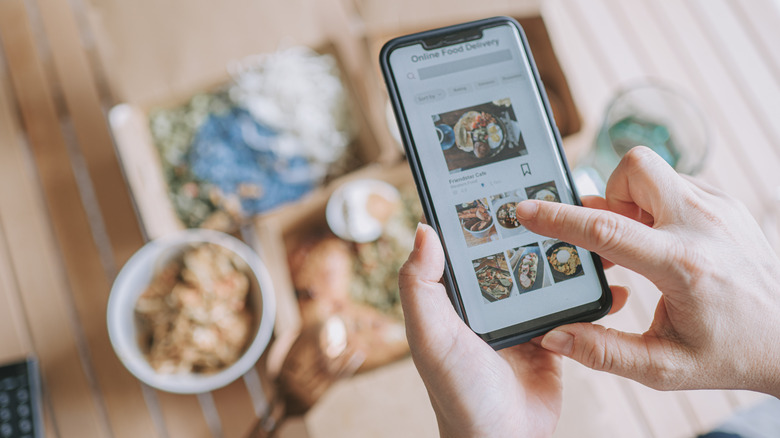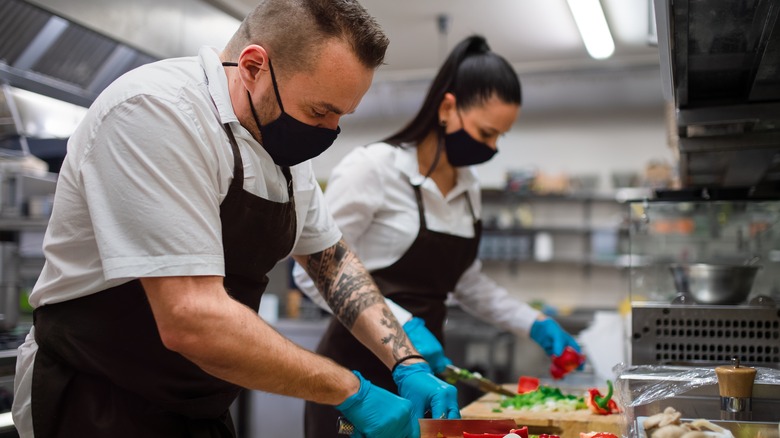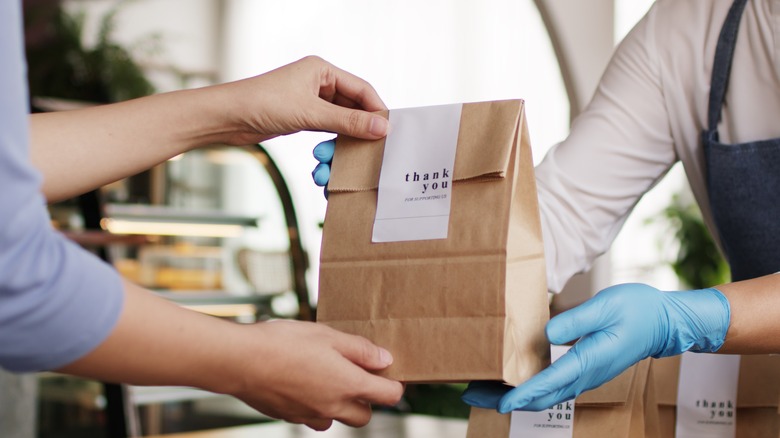Here's What A Virtual Restaurant Actually Is
Unless you're living under a rock, you've probably noticed that a lot has changed in the restaurant landscape due to the COVID-19 pandemic. Tons of eateries closed for good, everyone got used to eating outside, and delivery became a huge part of the bottom line. The in-person restaurant industry has largely bounced back in 2023, but delivery has also sparked a lot of innovation and isn't going anywhere. In fact, virtual restaurants, which focus on only delivery food, are one of the fastest growing sectors of the industry, with thousands opening in recent years.
But what exactly is a virtual restaurant? These delivery-only outlets are basically commercial kitchens that don't have brick-and-mortar space for people to come inside and eat, or are traditional restaurants that also cook virtual restaurant menus that are different from what they offer to sit-down customers. Many of them are housed in warehouse space or other industrial business spaces where rents are cheaper, and many of them create food for more than one menu and concept at a time.
While you might not know that there are tons of virtual restaurants in your area at this point, chances are if you're a fan of restaurant delivery apps, you've already eaten from at least one or two without even knowing it.
The rise of virtual restaurants
The virtual restaurant boom was born out of increased demand for food delivery during the COVID-19 pandemic. When in-person dining shut down around the country (and the globe), restaurateurs scrambled to find ways to pivot their business models to stay open, and demand for delivery grew exponentially. When it was starting to look like takeout and delivery would be the only options for the foreseeable future, people created restaurants where there would be no need for in-person guests. Everything would be made for eating off-premises. And a trend was born.
Despite in-person dining roaring back, virtual restaurants are thriving. While you won't see any of their storefronts when you're strolling in the restaurant districts of your local downtown, there's plenty of them operating behind the scenes via delivery apps. Sometimes referred to as "ghost kitchens" or "dark kitchens," these concepts are very real kitchens with trained staff busily making food every day. They can be as small as an extra menu at an existing restaurant or a food truck to expand the bottom line (think: a breakfast place that makes a burger menu in the hours when the customers aren't there), or as big as a warehouse-sized commissary kitchen that cranks out 20 or 30 different menus.
Why it works
The world has largely gone back to eating in restaurants, but that doesn't mean delivery and virtual kitchens are going to fall by the wayside. Demand for delivery remains high in large part thanks to workers shifting to working remotely indefinitely. Plus, with so many choices, it's easy to open an app and order anything you want, any night of the week.
Virtual restaurants are also a boon to the industry because they fill a niche. Small restaurants can launch a second concept online without the cost of opening an additional brick-and-mortar space, or they can lease out some of their kitchen space and time to a chef who's just starting out. Big concepts, which can serve several different menus at a time, can take advantage of renting warehouse space where there's no foot traffic. It's cheaper than commercial restaurant space, as there's no in-person dining, which also skips the costs of service staff, linens, dishes, and liquor licensing.
If you've never noticed if your chicken wings are coming from a virtual restaurant and you're curious, you can google the restaurant to see if there's a physical address for a storefront. DoorDash also clearly labels any virtual menus (although Uber Eats and Grubhub do not), according to Business Insider. But if you're just looking for a quick bite to get dinner on the table, don't worry about it — there's a virtual restaurant concept out there for almost any taste and budget.


